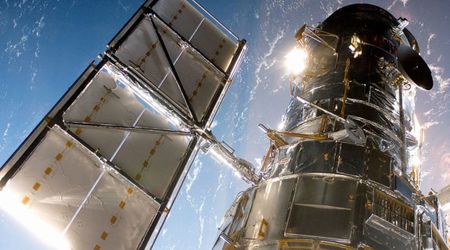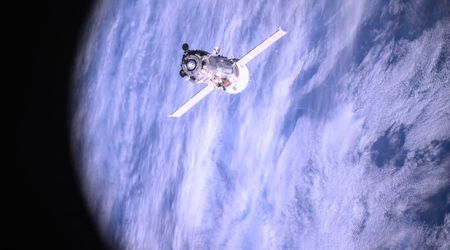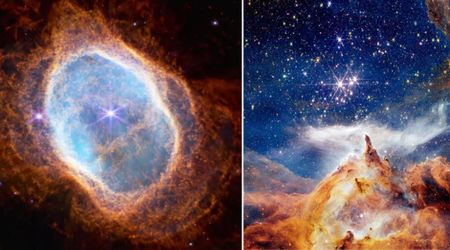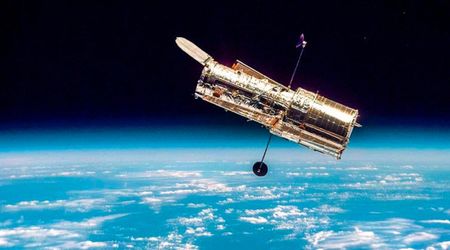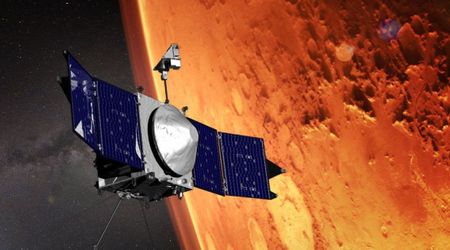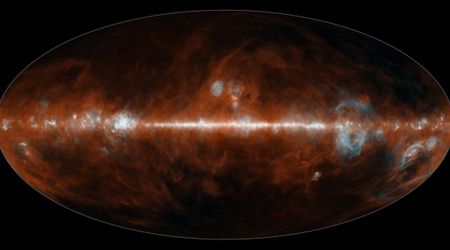New Webb image unveils rapid birth of stars in Cigar Galaxy, capturing dust and outflows in stunning detail

The James Webb Space Telescope has delivered a groundbreaking view of the Cigar Galaxy (Messier 82), just 12 million light-years away in Ursa Major, showcasing an extraordinary burst of star birth and previously obscured galactic dynamics. This latest image, designated NASA/ESA/CSA "Picture of the Month," provides unparalleled detail of M82's rapid stellar production, as per ESA.
We aren’t blowing smoke, M82 is working overtime forming new stars!
— NASA Webb Telescope (@NASAWebb) June 30, 2025
This galaxy, also called the Cigar Galaxy, is smaller than our Milky Way, but 5x as luminous and forms stars 10x faster! Webb’s NIRCam allows us to see billions of stars through all the dust!… pic.twitter.com/dWD2uhlS9I
Despite its smaller size compared to our Milky Way, M82 remarkably outshines it fivefold and generates stars at ten times the rate. Classified as a starburst galaxy, M82's central region is a hotbed of intense activity, long veiled by dense dust clouds in visible light. However, Webb's Near-Infrared Camera (NIRCam) has successfully pierced through this cosmic shroud, exposing the heart of the galaxy's luminosity.

Scientists attribute M82's accelerated star formation to a gravitational interaction with its larger neighbor, the spiral galaxy M81. This cosmic dance is believed to have channeled vast amounts of gas into M82's core millions of years ago, providing the raw material for an explosive period of stellar genesis. The galaxy is now home to over 100 super star clusters, each containing hundreds of thousands of stars, many still forming within their dusty cocoons.

Building on a 2024 Webb NIRCam image that focused on M82's core, this new, broader perspective captures the collective light of billions of stars and highlights the glow of polycyclic aromatic hydrocarbons (PAHs). Researchers utilized this data to meticulously map plumes traced by PAH emissions, revealing structures approximately 160 light-years wide, composed of individual clouds spanning 16-49 light-years. This unprecedented resolution allowed observation of these clouds being propelled away from the galactic disc by powerful outflowing winds. This phenomenon underscores the profound impact of M82's massive star clusters. As these colossal stellar nurseries form, their intense radiation and particle emissions generate fierce galactic winds, meticulously mapped in this latest NIRCam imagery.
German astronomer Johann Elert Bode first cataloged M82, alongside its companion galaxy M81, in 1774. M82 presents an apparent magnitude of 8.4 and is most favourably observed in April. While discernible as a faint patch of light within binoculars when viewed alongside M81, professional-grade telescopes are necessary to resolve the intricate details of its active core, according to NASA.
This detailed understanding builds upon previous observations, including the stunning image of M82 captured by the Hubble Space Telescope. That composite image, assembled from various wavelengths, utilized red to depict hydrogen and infrared light, highlighting the fierce starburst activity. Conversely, the galaxy's visible light, rendered in blue and greenish-yellow, offered a different perspective on M82's structure.

Recently, the Hubble Space Telescope also captured a dramatic cosmic event 250 million light-years away: a supermassive black hole aggressively consuming material within the spiral galaxy UGC 11397. While this galaxy, located in the constellation Lyra, appears to be a typical spiral with graceful arms of stars and dust, its core hides a colossal secret. There, a black hole with a mass 174 million times that of our Sun is actively growing by ensnaring gas, dust, and even entire stars. As this doomed matter falls inward, it heats up dramatically, creating a brilliant cosmic light show across the electromagnetic spectrum, from gamma rays to radio waves, with its brightness fluctuating unpredictably.
